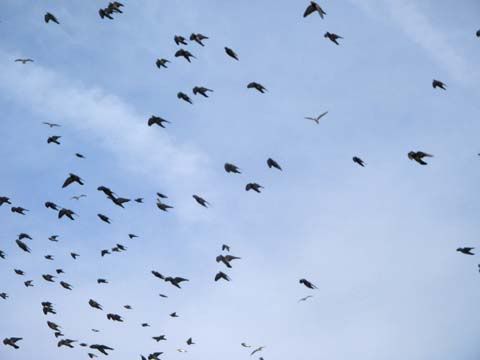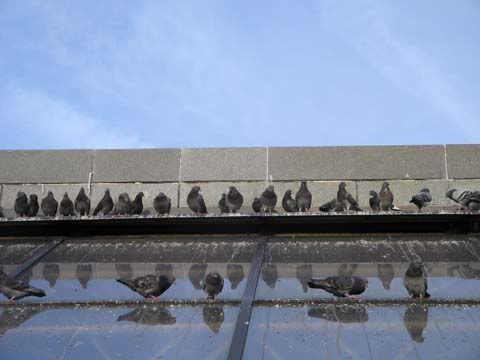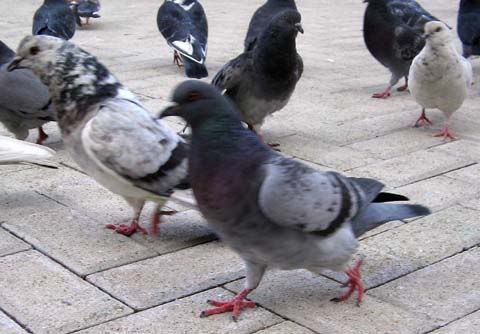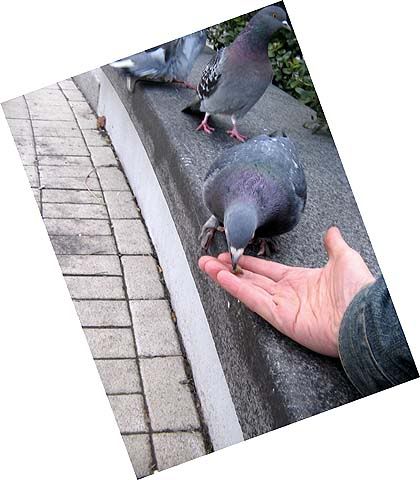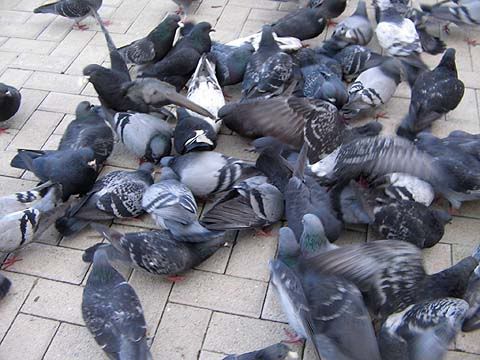365 Urban Species. #020: Rock Pigeon
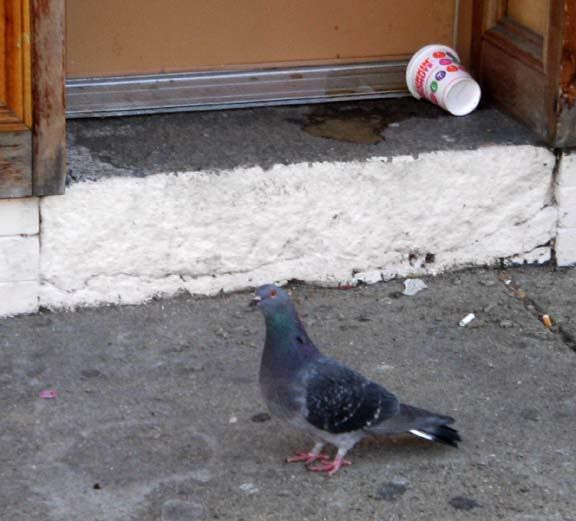
Urban Species #020: Rock Pigeon Columba livia
Emblematic of urban species (and the symbol of The Urban Pantheist magazine), the rock pigeon is the most well known of all urban birds. Familiarity, they say, breeds contempt, and it is thus that this beautiful tame bird is greeted more often by disgust than wonder.
The pigeon (formally known as the rock pigeon, formerly called the rock dove) has a long association with humans. Native to North Africa, these seed-eating birds were well-situated when humans in Egypt and the Middle East began large-scale agriculture. The invention of rectilinear buildings, with their exterior ledges that resemble the cliff faces upon which rock pigeons nest, further encouraged the birds to keep close company with humans. Soon dovecotes, specially built nesting structures from which chicks could be harvested, strengthened the pigeon-human bond.
Pigeons became semi-domesticated animals--provided with nesting areas but allowed to freely roam for food. This arrangement persists today, although centuries of captive breeding have honed the pigeon into a different bird from its Mediterrenean progenitors. Today's pigeon, designed for homing, racing, and fancy plumage, is a stronger, faster, more physically variable bird, that always nests near humans (usually on man-made structures) and has little to no fear of us. Pigeons have been brought to the most remote inhabited places on earth, including the Galapagos archipelago and Easter Island.
The temptation to sing its praises for page upon page defies the purpose of this project. Suffice it to say, whatever enemies pigeons may have, they will always have a friend here.

